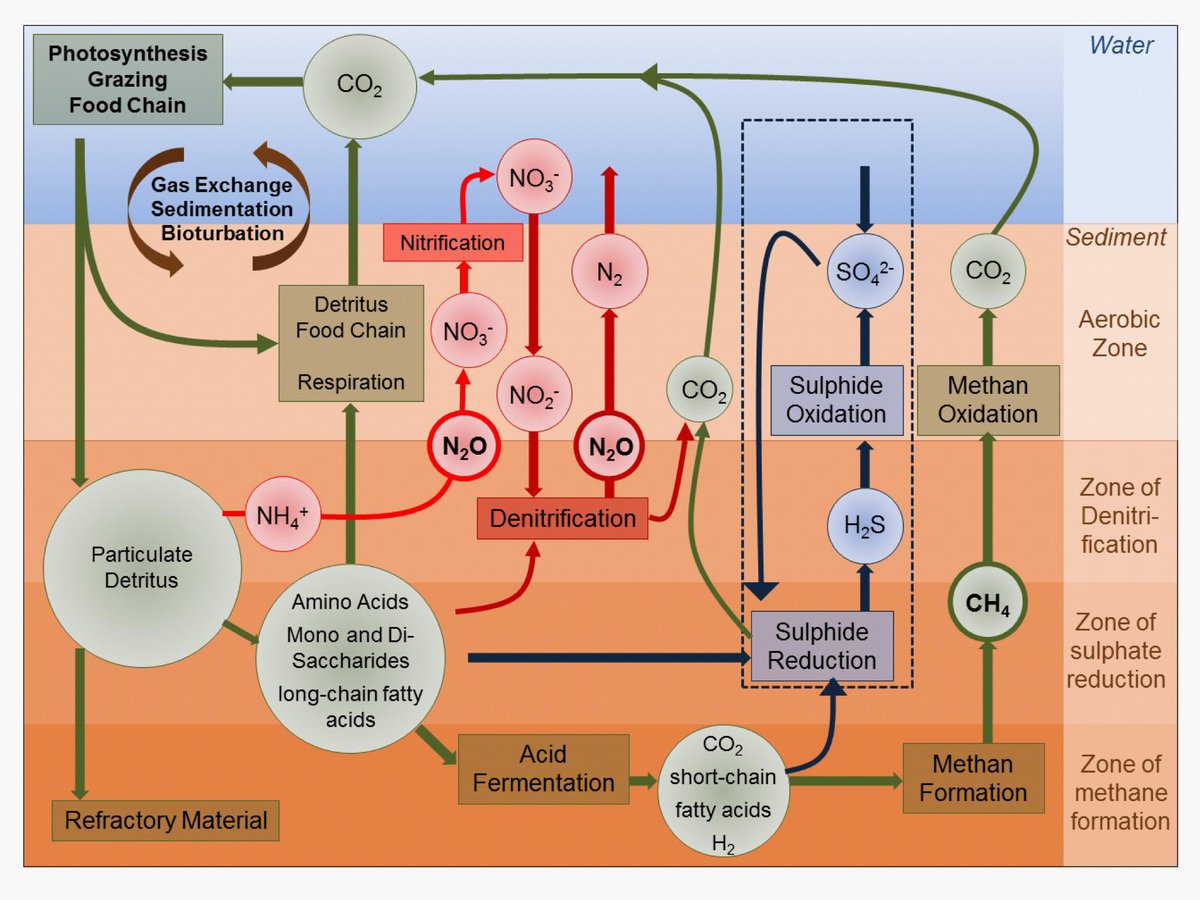G2: Trace gas liberation from coastal peatlands overlain by brackish waters
supervised by Voss, Jurasinski, Rehder

Focus
Central goal of this PhD project is the quantification of trace gas liberation (methane (CH4) and carbon dioxide (CO2)) from the shallow coastal-near seafloor. Special emphasis will be given to the controlling parameters, including hydrodynamic forcing, oxygen availability at the seafloor-water interface, and seawater biogeochemical properties. The main focus will be on trace gas emissions from former peatlands overlain by brackish waters for timespans from very recent to several 1000 years.
State of the art
One of the main motivations for rewetting activities in coastal regions is the restoration of the carbon dioxide storage capacity of low-lying peatlands (Wilson et al., 2016, Harenda et al., 2018). However, it has been recently shown that drastical enhancement of emissions of other trace gases (in particular methane) can occur during the transition process (Hahn et al., 2015). For the underlying processes, the availability of sulphate in the overlying water body should have a major influence (e.g. Capone and Kiene, 1988). Rewetting with seawater or brackish water has thus boundary conditions quite distinct from flooding with freshwater (Jurasinski et al., 2018). The degradation of organic material plays a role for methane release even for peat bodies that are overlain by sandy sediments and brackish waters for several thousand years, as has been shown for the coastal region in front of the Hütelmoor (Kreuzburg et al., 2018). This might, in conjunction with a stronger physical forcing and lower tendency for water stratification, explain the higher methane emissions into the atmosphere observed in very shallow coastal regions (Borges et al., 2016).
Work program
Based on the results and experience of the first PhD project within G2 (M. Kreuzburg), this project will focus on the temporal variability of methane and carbon dioxide liberation from coastal-near sediments. Using a newly developed sensor-based shallow water lander, pCO2, concentrations of methane, oxygen, hydrographic parameters and currents will be monitorend at very high temporal resolution. The working area Drammendorf will be in the focus on the 2nd part of this PhD-project after rewetting, planned for spring 2020.
References
Borges AV, Champenois W, Gypens N, Delille B, Harlay J (2016) Massive marine methane emissions from near-shore shallow coastal areas. Scientific Reports 6:27908
Capone DG, Kiene RP (1988) Comparison of microbial dynamics in marine and freshwater sediments: Contrasts in anaerobic carbon catabolism. Limnology and Oceanography 33:725–749
Hahn J, Glatzel S, Köhler S, Jurasinski G (2015) Greenhouse gas exchange in a coastal fen in the first year after flooding - a systems shift. PLOSone 10:e0140657
Harenda KM, Lamentowicz M, Samson M, Chojnicki BH (2018) The Role of peatlands and their carbon storage function in the context of climate change. In: Zielinski T, Sagan I, Surosz W (eds) Interdisciplinary Approaches for Sustainable Development Goals. GeoPlanet: Earth and Planetary Sciences, Springer Chambridge. 169–187
Jurasinski G, Janssen M, Voss M, Böttcher ME, Brede M, Burchard H, Forster S, Gosch L, Gräwe U, Gründling-Pfaff S, Haider F, Ibenthal M, Karow N, Karsten U, Kreuzburg M, Lange X, Leinweber P, Massmann G, Ptak T, Rezanezhad F, Rehder G, Romoth K, Schade H, Schubert H, Schulz-Vogt HN, Sokolova I, Strehse R, Unger V, Westphal J, Lennartz B (2018) Understanding the Coastal Ecocline: Assessing Sea-Land Interactions at Non-Tidal, Low-Lying Coasts through Interdisciplinary Research. frontiers in Marine Science doi: 10.3389/fmars.2018.00342
Kreuzburg M, Ibenthal M, Janssen M, Rehder G, Voss M, Naumann M, Feldens P (2018) Sub-marine Continuation of Peat Deposits From a Coastal Peatland in the Southern Baltic Sea and its Holocene Development. Frontiers in Earth Science 6:103
Wilson D, Blain D, Couwenburg J, Evans CD, Murdiyarso D, Page SE, Renou-Wilson F, Rieley JO, Sirin A, Strack M, Tuittila E-S (2016): Greenhouse gas emission factors associated with rewetting of organic soils. Mires & Peat 17:1–28
